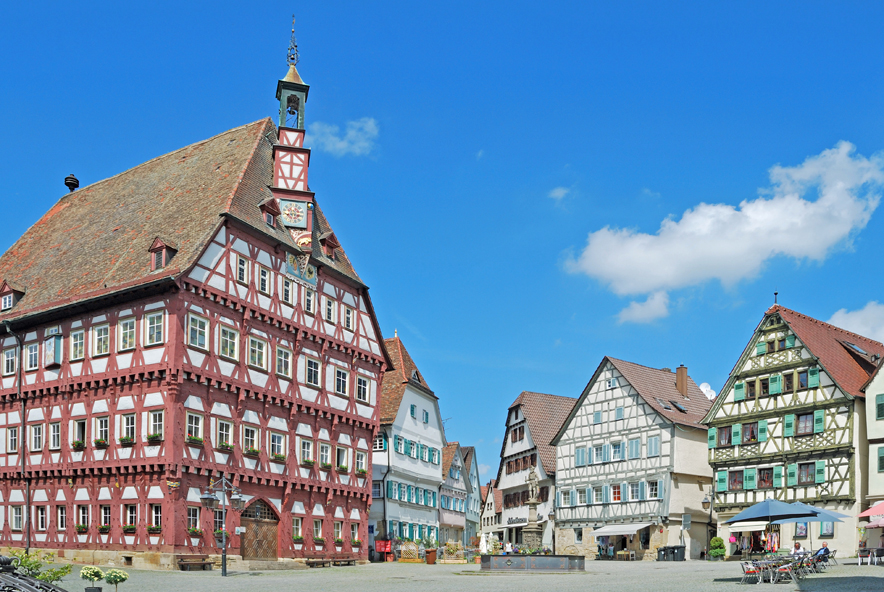Markgröningen is a town in the Baden-Württemberg district of Ludwigsburg and part of the German Half-Timbered Road. It belongs to the Stuttgart region and the European metropolitan region of Stuttgart,Germay. The former imperial city is known nationwide – above all for the shepherd’s run that takes place every year on the last weekend in August.
The town of Markröningen is located in the Strohgäu, in the district of Ludwigsburg, on the banks of the Glems. It is about 10 km west of Ludwigsburg and 15 km northwest of Stuttgart.
The existence of the locality is known from 779, in a donation to the Abbey of Fulda. In 1229 it became a free imperial city, until in 1336 it became part of the House of Württemberg. It was an important town in Württemberg until the main local administrations were transferred to neighboring Ludwigsburg in the 18th century. Between 1916 and 1975 it was connected to the railway network.
The city is surrounded by three scenic valleys, which are cut deep into the shell limestone and are partially under nature protection. The largely car-free valley sections of Glems, Enz and Leudelsbach are ideal for local recreation and are also popular for jogging, walking and cycling. Day trippers, hikers and cyclists like to stop at the market square with its street cafés and an ice cream parlour.
Access : Coordinates: 48.904722, 9.080833 / Markröningen located on the western outskirts of the district capital Luisburgo.
Highlights :
- Markröningen is famous throughout Baden-Württemberg, if not the world, mainly for its annual shepherd’s race, shepherd run.
Every year on the last weekend in August, the traditional Markgröninger Heimatfest takes place: The “Historical Shepherd’s Run” goes back to the parish fair (August 24) of the Bartholomäuskirche with a large fair and to the annual guild day of the Württemberg shepherds, whose patron saint is Bartholomäus. The “Bartholomäus-Markt”, which was also held elsewhere, was first mentioned in a document in 1445. The legend cultivated in the festival even traces its origin back to the Counts of Grüningen (13th century). - The town also belongs to the Deutsche Fachwerkstrasse (German Route of Half-timbered Houses), due to the presence of medieval buildings from the 15th century, all located in the old town, such as the Rathaus, the Old Hospital, the Protestant Church of St. Barthélémy and the Haut-Porche, the only remains of the old fortification.
-In addition, there are many other historical buildings to look at: the relics of the former Heilig-Geist-Spital (13th to 16th centuries), two wine presses, the state fruit box and the tithe barn as well as numerous proud town houses from the 15th and 16th centuries . For example the renovated Wimpelinhof, which has housed the municipal museum since 2005. / Bartholomew’s Church with high watch tower and bell tower / Gasthaus Krone on the market square – from the 15th century / the stately town hall (1441) / So-called bailiwick building in Kirchgasse / Farmer’s house with plank room in the Finstere Gasse / Wimpelinhaus with the only surviving city gate (1555) / Former benefice of the hospital founded in the 13th century ,Many other half-timbered houses from the 15th and 16th centuries - Activities : Regular city tours through Markgröningen’s old town on various historical topics / Scenic three-valley hike or bike tour through the Glems, Enz and Leudelsbach valleys / The city shows itself from its best side at the shepherd’s run, the oldest Württemberg folk festival.
Go next : To Hohenasperg Fortress, approx. 5 km / To the Blooming Baroque in nearby Ludwigsburg (10 km) / Keltenweg, a cycling and hiking trail from Asperg via Hochdorf to Ditzingen.

